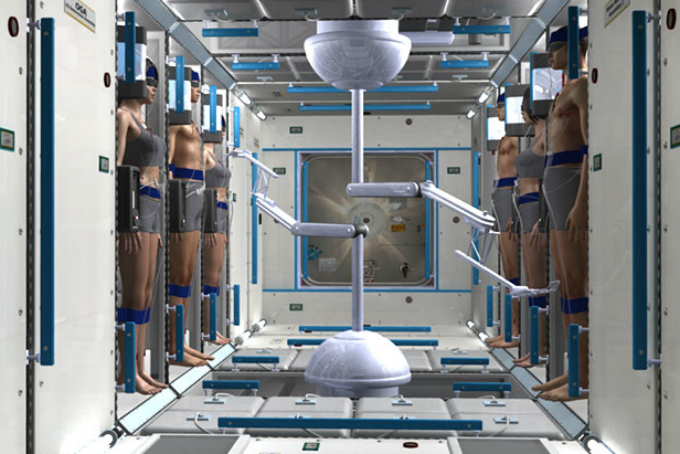
Imagine being confined to a space the size of a walk-in closet with three or four of your work colleagues for several months, conducting a mission, and climbing back into that same confined space for another several months with nothing new to occupy your time. If it sounds like the makings of a reality show that drives the contestants to murder each other, you probably are not far off. Astronaut interaction, boredom, and irritation one of the smaller problems facing astronauts who are brave enough to endure space travel. Think celestial cabin fever.
The amount of resources required to transport six humans to Mars is surprising. NASA estimates a habitation module would need 380 cubic meters of volume, and would weigh in at 28,000 kilograms. Those six hungry astronauts would need 13,000 kg of food. That same group of astronauts in a state of stasis would require less space, less food, and ultimately result in a reduction of 140,000 kg of weight from smaller engines and less fuel consumption.
Stasis is simply defined as a state of “inactive, low metabolic torpor state for mission transit phases.” It is more similar to hibernation than something more sci-fi like cryo-sleep. The problem is that humans do not naturally hibernate, but they can be placed into a state similar to hibernation for several days. Hospitals do this all the time and call it therapeutic hypothermia. After a traumatic injury, a patient can be placed into a sedated hypothermia to give the body a few days to use all its energy to heal.
Astronauts in this state would receive nutrients intravenously, but intravenous feeding has been shown to cause problems over a long period. SpaceWorks still has some problems to work out, but the message to take away is that space travel in a state of stasis is closer to reality than thought previously.
Editors' Recommendations
- Nvidia and AMD GPUs work together better than you might think
- Chocolate mousse in space is more important than you think
- Could the earliest building blocks of life have come from space?
- Watch SpaceX’s Crew-4 astronauts arrive at new home in space
- SpaceX Crew-4 astronauts are on their way to the space station


